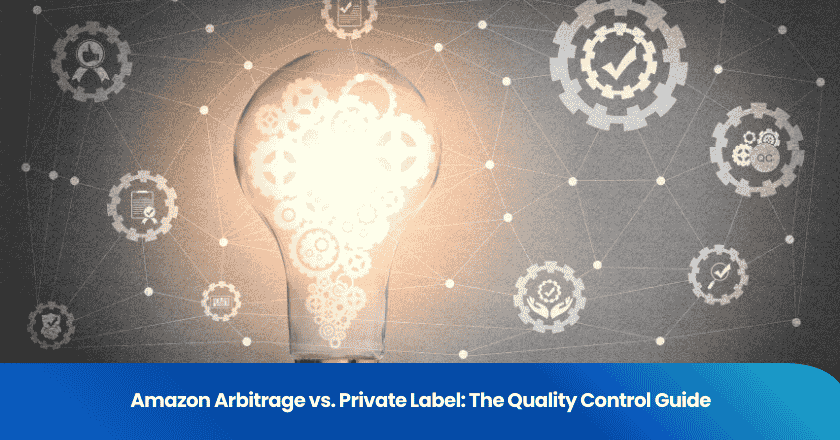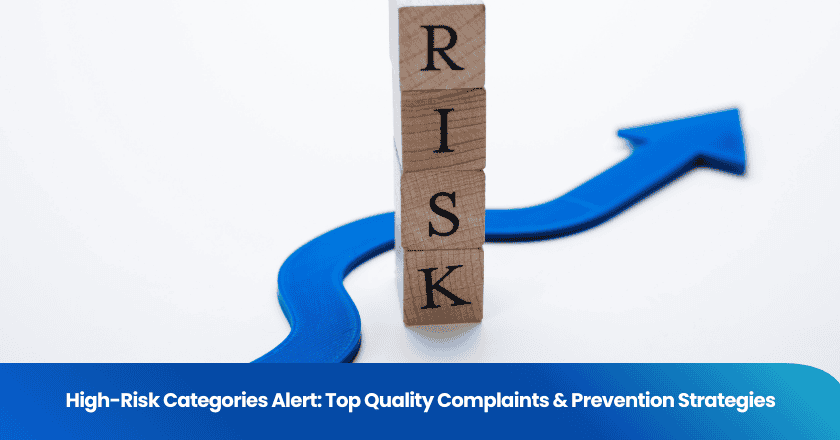
In the globalized economic environment, sourcing low cost has become a key means for enterprises to enhance their competitiveness. Through cross-border procurement, enterprises can utilize the cost differences between different countries and regions to achieve optimal allocation of resources.
What is sourcing low cost?
Definition and concept
What is sourcing low cost?
Sourcing low cost refers to the behavior of enterprises to reduce the procurement costs of raw materials, components, or services by optimizing procurement strategies, selecting suppliers and procurement channels with higher cost-effectiveness, while ensuring product quality and supply stability.
The process involves negotiation and comparison of prices, including a comprehensive evaluation of supplier qualifications, production capacity, and quality control systems, to ensure the economy and effectiveness of the procurement activities.
Historical background
The history of sourcing low cost can be traced back to the process of globalization and trade liberalization.
With the gradual reduction of international trade barriers, companies are beginning to cross borders to source low cost resources and suppliers.
This trend became particularly prominent in the latter half of the 20th century, with the rapid development of information technology and logistics technology, which making sourcing low cost increasingly convenient and efficient.
The strategy of sourcing low cost is gradually becoming one of the key means for many companies to enhance their competitiveness.
Key driving factors
The development of sourcing low cost is driven by various key driving factors, with economic factors and technological advancements being particularly prominent.
Economic factors:
1. Cost differences: There are significant differences in labor costs, raw material costs, tax policies, etc. between different countries and regions, providing enterprises with opportunities to reduce costs through sourcing low cost across borders.
2. Market competition: Intense market competition drives enterprises to continuously seek ways to reduce costs and improve efficiency, in order to maintain or increase market share. Sourcing low cost has become an important means for enterprises to cope with market competition.
Technological advancement:
1. Information Technology: The development of information technologies such as the Internet plus and e-commerce has enabled enterprises to more conveniently access supplier information and quotations from around the world, enhancing the transparency and efficiency of procurement activities.
2. Logistics technology: The development of modern logistics technology has reduced the cost and time of cross-border transportation, enabling enterprises to more flexibly choose sourcing low cost channels, while ensuring the stability and response speed of the supply chain.
Sourcing low cost is one of the important strategies for enterprises to enhance their competitiveness in the context of globalization. By fully utilizing the driving forces of economic factors and technological advancements, enterprises can achieve significant reductions in procurement costs and improvements in overall operational efficiency.
When implementing the sourcing low cost strategy, enterprises also need to pay attention to balancing the relationship between cost and quality, efficiency and risk, ensuring the sustainability and long-term benefits of procurement activities.
What are the benefits of sourcing low cost?
Sourcing low cost, as an important part of corporate strategic management, brings benefits in many aspects, not limited to direct cost savings, but also involves market expansion, efficiency improvement, and other dimensions.
Cost savings
Reduce production costs by sourcing low cost
The most direct benefit of sourcing low cost is to reduce production costs. By seeking suppliers with lower prices and reliable quality, companies can reduce the procurement costs of raw materials and components, thereby lowering overall production costs. Cost savings can be translated into higher profit margins, or by using price competition strategies to attract more consumers and expand market share.
Competitive pricing
Sourcing low cost enables enterprises to offer products at more competitive prices. By reducing procurement costs while maintaining product quality and performance, companies can lower their selling prices, gaining a competitive edge in the market. A more advantageous pricing strategy will attract price-sensitive consumers, increase sales, and further enhance the company's market share and profitability.
Entering new markets
Expansion opportunities
Sourcing low cost provides enterprises with opportunities to enter new markets. Through cross-border procurement, companies can leverage the cost advantages of different regions, enter new markets with more attractive prices, and compete with local competitors.
Supply chain diversification
Sourcing low cost promotes the diversification of the supply chain. Companies are no longer limited to local or single-region suppliers, but can choose the best suppliers and procurement channels globally. A diversified supply chain system reduces dependence on a single supplier, improves the stability and flexibility of the supply chain, and enhances the ability of companies to respond to market changes and risks.
Improve efficiency by sourcing low cost
Simplify operations
Sourcing low cost often comes with the simplification and optimization of the procurement process. By establishing an efficient procurement management system, companies can respond more quickly to market changes, reduce procurement cycles, and lower inventory costs.
Focus on core competitiveness
Sourcing low cost enables enterprises to focus more on their core competitiveness. By outsourcing non-core businesses such as raw material procurement and component manufacturing, enterprises can allocate more resources and energy to core businesses such as product research and development, marketing, etc. Focusing on strategy enhances the innovation ability and market competitiveness of enterprises, achieving sustainable development.
When implementing a sourcing low cost strategy, enterprises also need to carefully weigh various factors to ensure the economy and effectiveness of procurement activities, while paying attention to issues such as quality control, supply chain stability, and ethics.
What are the risks of sourcing low cost?
Sourcing low cost brings significant benefits, but it also comes with a series of risks. These risks can mainly be attributed to three major categories: quality control issues, supply chain disruptions, and ethical issues.
The following is a detailed analysis of these risks and their sub-contents:
Quality control issues
Variability of standards
Risk description: There may be differences in quality standards between different countries and regions, which can lead to the risk of unstable product quality for enterprises during the sourcing low cost process. Even if the supplier promises to produce according to specific standards, deviations may still occur in actual implementation, thereby affecting the quality of the final product.
Impact: Substandard product quality may not only lead to increased costs for product returns and exchanges for the company, but more importantly, it may damage the company's brand reputation and consumer trust.
Impact on brand reputation
Risk description: Once low-quality products enter the market and are discovered and reported by consumers, it will cause immeasurable damage to the brand reputation of the enterprise. The brand is one of the most valuable intangible assets of the enterprise. Once it is damaged, it is extremely difficult and costly to repair.
Impact: The damage to brand reputation will directly affect the company's market position, consumer trust and loyalty, as well as sales volume and market share.
Supply chain disruption
Political instability
Risk description: Political instability factors on a global scale, such as political conflicts, changes in trade policies, etc., may lead to supply chain disruptions. For example, measures such as trade sanctions and embargoes may prevent companies from sourcing required products from specific countries or regions.
Impact: Supply chain disruptions will directly affect the production and operation of enterprises, potentially leading to production stagnation, inventory shortages, and other issues, which will impact the market supply capabilities of the enterprises.
Natural disasters
Risk description: Unforeseeable events such as natural disasters like earthquakes, floods, and typhoons may cause damage to suppliers' production facilities, leading to supply disruptions. Additionally, natural disasters may also affect transportation and logistics networks, making it impossible to deliver products on time.
Impact: Supply chain disruptions caused by natural disasters will expose enterprises to risks such as production delays and increased costs, and in severe cases, may even threaten the survival and development of the enterprise.
Ethical issues
Labor practice
Risk description: Sourcing low cost may involve labor practice issues such as low wages, overtime work, and poor working conditions. These issues not only violate international labor standards and local laws and regulations, but also harm the rights and dignity of workers.
Impact: Once labor practice issues are exposed, it will have a serious impact on the corporate image and social reputation. Consumers and the public will have negative evaluations of the company, and subsequently boycott its products and services.
Environmental impact
Risk description: Sourcing low cost may encourage companies to choose suppliers with lower environmental standards, leading to environmental pollution and resource waste. These suppliers may lack effective environmental protection measures and technical means to reduce waste emissions and energy consumption during the production process.
Impact: Environmental issues are increasingly drawing global attention. Companies that neglect their environmental responsibilities will face significant social pressure and legal risks. Environmental pollution and resource waste will also increase the operating costs of companies and affect their long-term development.
The risks of sourcing low cost cannot be ignored. When implementing a low-cost procurement strategy, enterprises should fully consider these risks and take corresponding measures to prevent and respond to them. For example, by strengthening supplier management, establishing a diversified supply chain system, enhancing quality control, and meeting environmental protection requirements, enterprises can reduce risks and improve the overall efficiency of procurement activities.
What are the strategies to reduce risks?
In terms of reducing the risks associated with sourcing low cost, companies can adopt a series of strategies to ensure the smooth progress of procurement activities and minimize potential risks.
The following is a detailed analysis of some key strategies and their sub-contents:
Due diligence
Strategy description: Conduct comprehensive due diligence on potential suppliers, including but not limited to their financial status, production capacity, quality control system, past performance, and customer feedback. Ensure that suppliers have stable supply capabilities and good reputation through on-site inspection, document review, and reference to third-party certification.
Implementation suggestion: Develop a detailed supplier audit process and standards to ensure that each supplier undergoes rigorous screening and evaluation. Establish supplier profiles and regularly update audit results to facilitate timely adjustments to sourcing strategies.
Quality Assurance Plan
Strategy description: Collaborate with suppliers to develop a quality assurance plan, clarifying product quality standards and inspection methods. Require suppliers to provide samples for testing and verification to ensure that the products meet corporate requirements. Clarify quality assurance terms and liability for breach of contract in the procurement contract, so as to hold suppliers accountable in case of quality issues.
Implementation suggestion: Establish a strict quality inspection and monitoring mechanism, conduct spot checks or full inspections of incoming products. Establish a quality information sharing mechanism with suppliers, communicate and resolve quality issues in a timely manner. Conduct regular quality assessments and improvement suggestions for suppliers, promoting continuous improvement in the cooperative relationship between both parties.
Diversification
Multi-channel sourcing strategy
Strategy description: Avoid over-reliance on a single supplier or sourcing channel, and diversify risks through multi-channel procurement. This helps ensure that when a problem occurs in one channel, the company can still obtain the required products from other channels.
Implementation suggestion: Establish a wide network of suppliers and maintain cooperative relationships with multiple suppliers. Regularly assess the supply capacity and cost-effectiveness of different channels, and flexibly adjust the procurement proportion and channels.
Establish local partnerships
Strategy description: Establish partnerships with local governments, industry associations, and other institutions to leverage local resources and policy support to reduce sourcing costs and risks. Through local partnerships, companies can better understand local market conditions and policy dynamics, providing strong support for procurement decisions.
Implementation suggestion: Actively participate in procurement activities and cooperative projects organized by local governments, striving for policy benefits and financial support. Maintain close contact with industry associations to understand industry trends and best practices, and enhance the procurement management level of the enterprise.
Ethical sourcing low cost
Comply with standards
Strategy description: Adhere to international labor standards, environmental regulations, and other relevant laws and regulations as well as industry standards to ensure that procurement activities are legal and compliant. This helps maintain the social image and reputation of the enterprise and avoids legal risks and economic losses caused by violations of laws and regulations.
Implementation suggestion: Establish a comprehensive procurement compliance management system and process, conduct compliance audits and assessments of suppliers. Strengthen training and education for procurement personnel to enhance their understanding and knowledge of laws, regulations, and industry standards.
Corporate social responsibility
Strategy description: Actively fulfill corporate social responsibility (CSR), paying attention to suppliers' labor practices, environmental performance, etc. By promoting suppliers to improve labor conditions and environmental measures, we aim to jointly enhance the sustainability and social impact of the supply chain.
Implementation suggestion: Incorporate corporate social responsibility into the procurement strategy and supplier management system, clarifying the social responsibility requirements and evaluation criteria for suppliers. Establish a social responsibility sharing mechanism with suppliers to jointly promote the sustainable development and social responsibility fulfillment of the supply chain. At the same time, strengthen communication and cooperation with all sectors of society to jointly promote the development of social responsibility.
Enterprises can reduce the risks of sourcing low cost through measures such as due diligence, diversified procurement strategies, and ethical procurement. The implementation of these strategies requires enterprises to have a comprehensive procurement management system and the support of a professional procurement team to ensure the smooth progress of procurement activities and the maximization of corporate interests.
The strategy of sourcing low cost can bring cost savings and enhanced market competitiveness to enterprises. However, it is also accompanied by risks such as quality control, supply chain disruptions, and ethical issues. We need to implement strategies such as due diligence, diversified procurement, and ethical procurement to control or effectively reduce these risks.
When implementing the sourcing low cost strategy, enterprises need to find the balance between cost and quality, efficiency and stability, ensuring the sustainability and long-term benefits of procurement activities.
With the continuous development of globalization and information technology, the strategy of sourcing low cost will continue to play an important role in corporate operations. Enterprises need to continuously innovate procurement management methods and technological means to adapt to market changes and changes in consumer demand.
Smart Sourcing Content Team
Article by Smart Sourcing Content Team
The Smart Sourcing Content Team is committed to delivering high-quality, easy-to-understand information that helps our audience navigate the complexities of global sourcing. Our team of writers has extensive experience in producing articles across various fields such as procurement, supply chain management, market trends, and industry best practices. We specialize in sectors like apparel, textiles, and consumer goods, providing targeted insights to help businesses in these industries optimize their sourcing strategies and stay competitive.
Grow your business with TradeAider Service
Click the button below to directly enter the TradeAider Service System. The simple steps from booking and payment to receiving reports are easy to operate.




